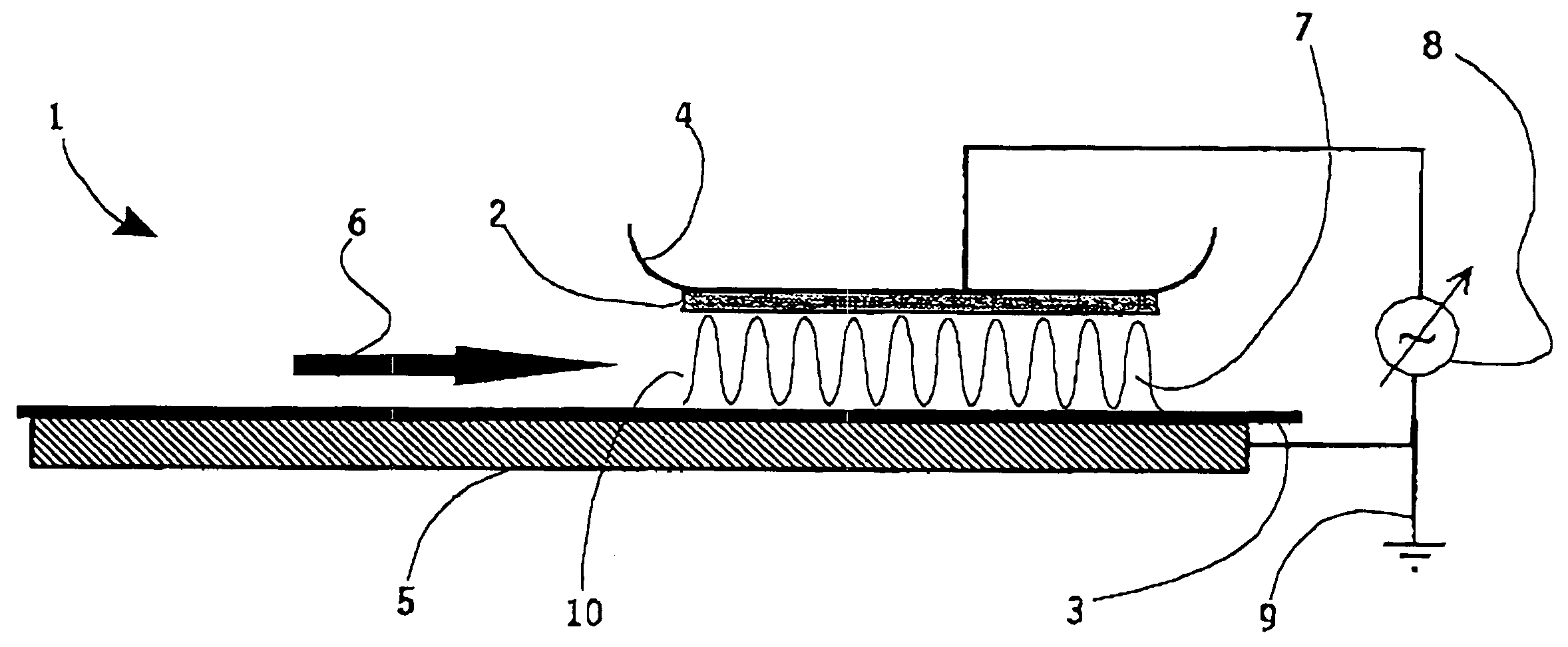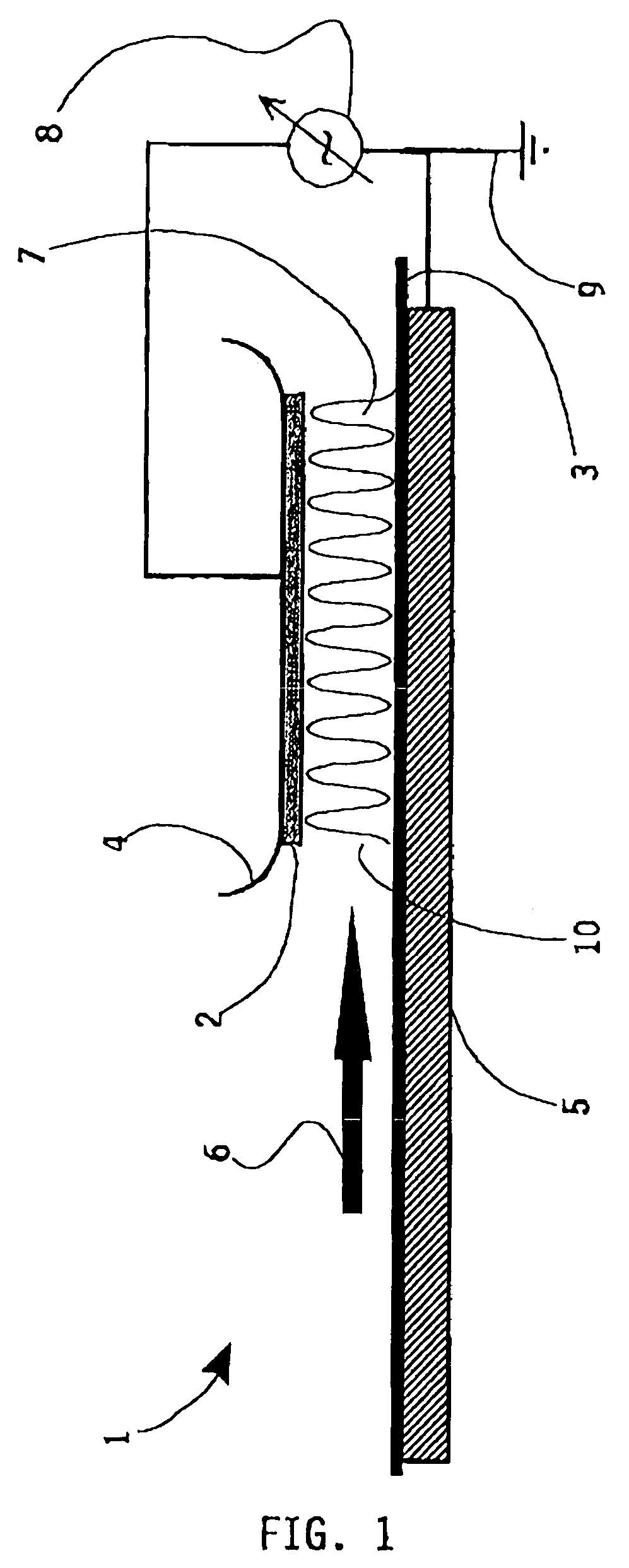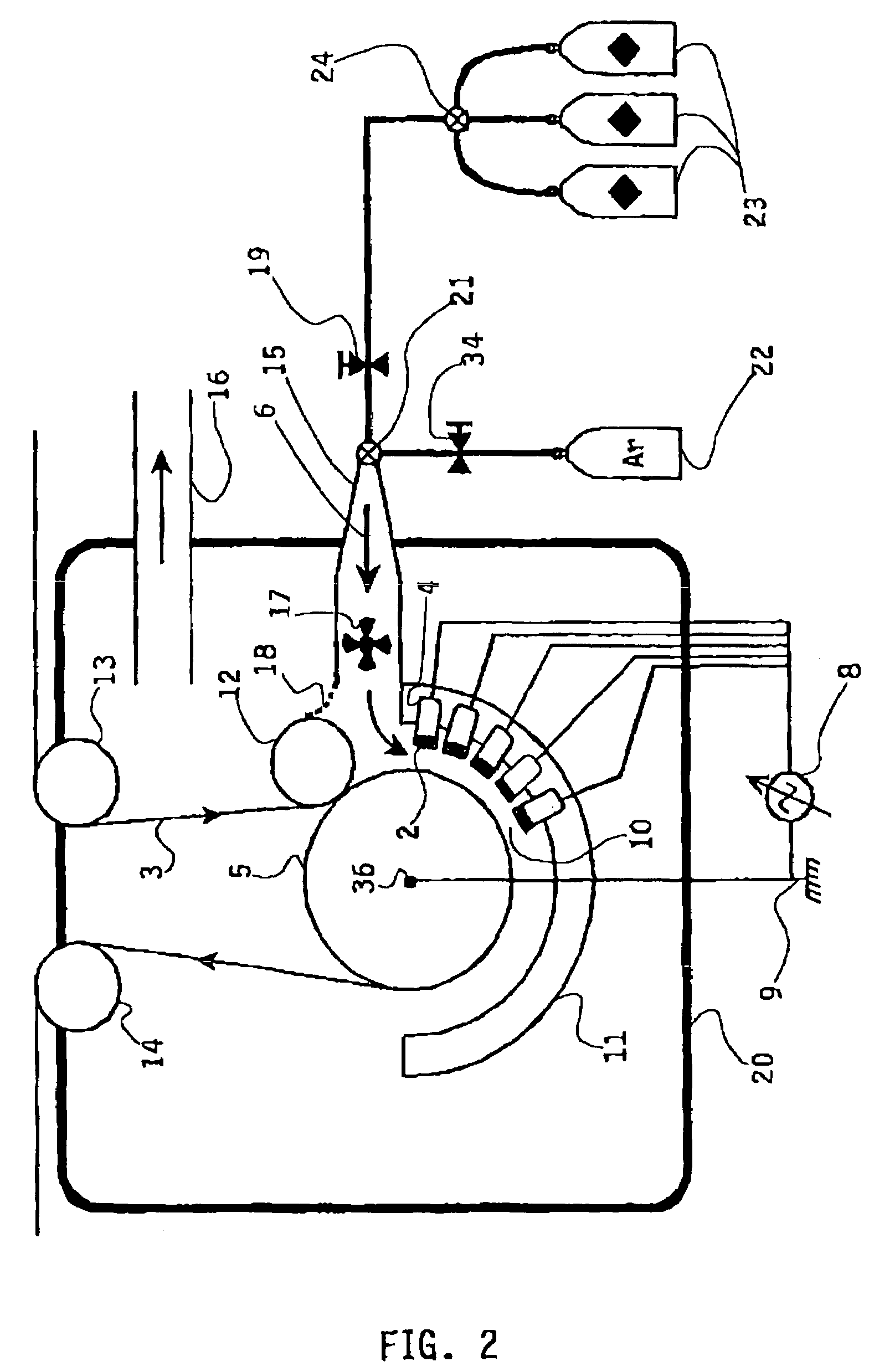Method and arrangement for generating an atmospheric pressure glow discharge plasma (APG)
a plasma and glow discharge technology, applied in the direction of plasma technique, chemical vapor deposition coating, coating, etc., can solve the problems of difficult to meet the criteria, unstable plasma at atmospheric pressure, and difficult to generate plasma under the above circumstances, and achieve outstanding surface treatment capabilities and cost-effective effects
- Summary
- Abstract
- Description
- Claims
- Application Information
AI Technical Summary
Benefits of technology
Problems solved by technology
Method used
Image
Examples
example 2
[0104]In a second example, an atmospheric pressure glow discharge plasma was generated by applying nitrogen gas (N2) with a velocity of 2 m / s into the discharge space at an amplitude of the applied voltage of 4.5 kV. Both electrodes are covered with a dielectric material comprising of polyethylenenaphtalate (PEN) and having a thickness of 100 μm. The gap distance between the electrodes (typically forming the discharge space) is 1 mm. An LC matching network is incorporated in the plasma arrangement. The results of the measurements are listed in the table below and are presented in the graph in FIG. 4. Again the power P coupled into the APG plasma 28, the exposure non-uniformity parameter δD 29 and the minimum time of exposure tminim 30 are shown.
[0105]
f [kHz]P [W]δD [%]tminim [s]12942394630452836707818228222076
example 3
[0106]In a third example, an atmospheric pressure glow discharge plasma was generated by applying air with a velocity of 2 m / s into the discharge space at an amplitude of the applied voltage of 4.5 kV. Both electrodes are covered with a dielectric material comprising of polyethylenenaphtalate (PEN) and having a thickness of 100 μm. The gap distance between the electrodes (typically forming the discharge space) is 1 mm. An LC matching network is incorporated in the plasma arrangement. The results of the measurements are listed in the table below and are presented in FIG. 5. Again the power P coupled into the APG plasma 31, the exposure non-uniformity parameter δD 32 and the minimum time of exposure tminim 33 are shown.
[0107]
f [kHz]P [W]δD [%]tminim [s]129462906330521201357089705282290209
example 4
[0108]As an example of a measurement at a frequency of approximately 280 kHz, FIG. 6 presents a diagram of the AC-voltage applied to the electrodes and the plasma current of a plasma generated using a method or arrangement according to the present invention. In this particular example, the carrier gas used was argon at a flow velocity of 2 m / s, the gap distance was 2 mm. The plasma current is shown by the solid line and the applied voltage by the dotted line.
[0109]The results of the above-mentioned experiments show a stable APG plasma can be generated in the presence of argon, nitrogen and air at high frequency. However the operation window for maintaining a uniform and stable plasma for the nitrogen and air gasses are rather limited. For argon gas said phenomena is surprisingly not observed. On the other hand, it is observed that at frequency ranges between 200 to 500 kHz, the plasma non-uniformity of the gasses are one order of magnitude smaller than those obtained in the frequenc...
PUM
| Property | Measurement | Unit |
|---|---|---|
| frequency | aaaaa | aaaaa |
| frequency | aaaaa | aaaaa |
| frequency | aaaaa | aaaaa |
Abstract
Description
Claims
Application Information
 Login to View More
Login to View More - R&D
- Intellectual Property
- Life Sciences
- Materials
- Tech Scout
- Unparalleled Data Quality
- Higher Quality Content
- 60% Fewer Hallucinations
Browse by: Latest US Patents, China's latest patents, Technical Efficacy Thesaurus, Application Domain, Technology Topic, Popular Technical Reports.
© 2025 PatSnap. All rights reserved.Legal|Privacy policy|Modern Slavery Act Transparency Statement|Sitemap|About US| Contact US: help@patsnap.com



